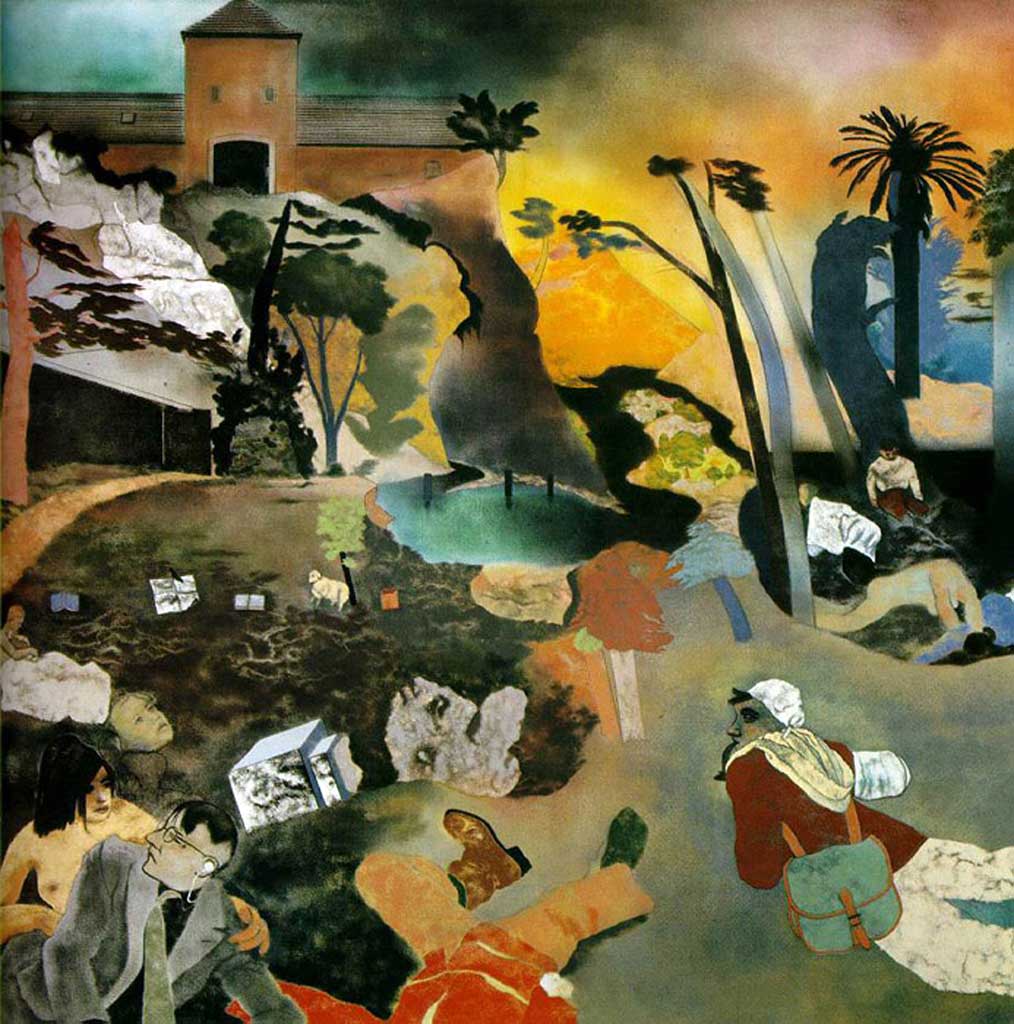R.B. Kitaj’s ability to add multiple subjects within a painting without crowding out or subtracting from the work’s focus amazes me. Each work seems to contain multiple dimensions that both interact and exist on their own. In “The Jewish Rider,” Kitaj paints a balding man in orange sweatpants sleeping in a train car. His seat, however, contains the outline of a horse. I like that Kitaj portrays the man in a mix between his physical surroundings and thoughts. While he rides the horse only in his dreams, those thoughts influence his life enough that they should be painted along with the man.
Much of Kitaj’s work seems to question the boundaries between the physical world and the dream-world. His piece, “If not, not” mixes together radically different aspects of life such as sex, war, trash, the beach, sunsets, lakes, and forests. The resulting blend presents the subjects perhaps as our subconscious brain perceives them. I find that this format reminds me of my own experiences and causes me to enter a dream-like state after observing for extended durations.
Kitaj’s “John Ford on His Deathbed” also strikes me as bordering between real and surreal. The figures around the room do not interact with Ford though stay in the room, comforting him before death. I like how Kitaj questions what makes things physically exist, as thoughts, especially in times of mental distress manifest physically manifest themselves in our lives. This was true even in R.B. Kitajs life, as the brutal art reviews that mentally tormented him eventually made their way into his personal relationships and work so much that physically weaving those reviews into a portrait of him would portray his character more accurately than a photograph.



